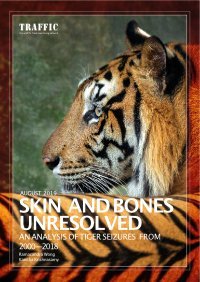Skin and Bones Unresolved: An Analysis of Tiger Seizures from 2000–2018
By Wong, R. and Krishnasamy, K
The present report is the fourth iteration of TRAFFIC’s analysis on the illegal trade in Tigers Panthera tigris looking at an overall 19-year trend from 2000 to 2018. Previous analyses reviewed seizures from the 2000–2010, 2000–2012 and 2000–2015 periods. This analysis involved largely Tiger Range Countries (TRCs), while information opportunistically gathered from outside TRCs has also been included to provide a more comprehensive picture of the illegal trade in Tigers. Beyond highlighting the statistics, this report provides insights into trends and the most current and urgent threats facing Tigers. Nineteen years is a considerable time frame for data aggregation, and admittedly numerous changes have occurred in the wildlife protection and management regimes, including of Tiger habitats in a number of TRCs. With the large dataset spanning almost two decades, various considerations emerge involving TRCs and issues concerning the protection of wild Tigers, as well as those arising from captive facilities implicated with illegal Tiger trade. Overall, a conservative estimate of 2,359 Tigers were seized from 2000 to 2018 across 32 countries and territories globally. These occurred from a total of 1,142 seizure incidents, with 95.1% (or 1,086 incidents) occurring in the 13 Asian TRCs1 , accounting for a minimum of 2,241 Tigers seized. On average, 60 seizures were recorded annually, accounting for almost 124 Tigers seized each year. The top three countries with the highest number of seizure incidents were India (463 or 40.5% of total seizures) and China (126 or 11.0%) closely followed by Indonesia (119 or 10.5%).
Cambridge, UK: TRAFFIC International, 2019. 52p.


